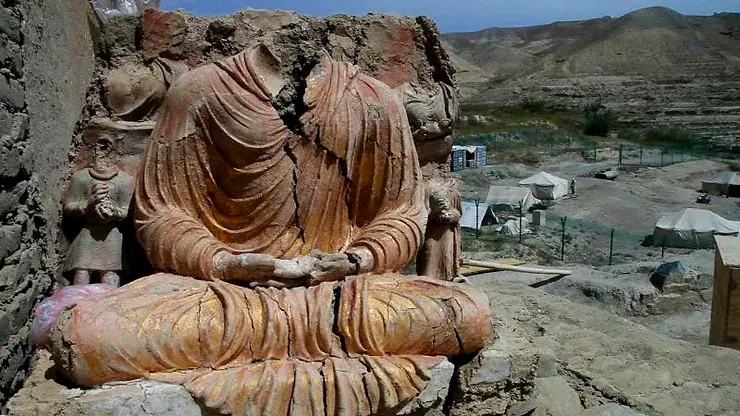By: Jayden Ho
Near the ruins of the colossal Buddha statues in Bamian, Taliban soldiers are seen contemplating the damage inflicted upon these symbols of Afghanistan’s culture. 22 years ago, the Taliban, under the rule of founder Mohammad Omar, declared these ancient edifices as false gods and systematically demolished them, sparking global outrage.
However, in an ironic twist, the same regime, now grappling with a debilitating economic crisis, is leveraging these vestiges of the past to generate revenue. The Taliban have initiated visits to the ruins, suggesting a pragmatic shift in their outlook.
“This is the identity of our country,” Kheyal Mohammad, a 44-year-old Taliban soldier, acknowledged. He expressed regret over the destruction of the historic monuments, echoing the sentiment that they should be rebuilt.
The Taliban has deployed over 1,000 guards across Afghanistan to protect national heritage sites and oversee ticket sales. A month ago, senior Taliban officials even attended the inauguration of a museum section dedicated to Buddhist artifacts.
The Taliban’s newfound interest in cultural heritage preservation is not unanimous. While the regime’s deputy culture minister, Atiqullah Azizi, understands the importance of sites like the Bamian Buddhas, others, like provincial governor Abdullah Sarhadi, view such artifacts as blasphemous and advocate for tourists to visit Islamic sites.
Saifurrahman Mohammadi, information and culture director for the regional Taliban government, expressed optimism about tourism as a significant income source. Locals, however, are skeptical. They remember the human rights atrocities committed by the Taliban during its previous reign, particularly against the minority Shiite Muslim Hazaras.
As international sanctions and aid reductions exacerbate economic hardships, the reduced tourism due to the destroyed Buddhist statues profoundly affects daily life. Local businesses going bankrupt due to lost revenue, children’s education is under threat, and the once-thriving Bamian souvenir market is struggling to stay afloat.
Nonetheless, the regime’s recent gestures toward preserving cultural heritage sites have intrigued Taliban soldiers and Afghan citizens alike. However, the crucial question still remains: Is the Taliban truly changing, or just surviving?
Though the Taliban has welcomed international archaeologists to resume their work, their return remains a moral and logistical conundrum. UNESCO has resumed minor conservation projects but postponed the inauguration of a sprawling cultural center and museum overlooking the Buddha site.
With foreign tourists reluctant to return, the success of the Taliban’s preservation efforts and its potential to generate significant tourism revenue remains uncertain. However, as Taliban soldiers pedal around the clear blue lakes of Band-e-Amir National Park near Bamian, a sense of cautious optimism, or perhaps bewilderment, seems to prevail.
The fate of Afghanistan’s cultural heritage hangs in the balance, raising questions about the Taliban’s capacity, expertise, and true intentions. The story of the Bamian Buddhas, therefore, serves as a test for a regime striving to redefine its identity in the face of global scrutiny and internal strife.
Citations:
Bamian Buddhas: Taliban entices tourists to Afghan ruins it destroyed – The Washington Post











